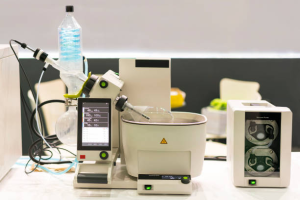
Laboratory glass reaction vessels are widely used in laboratories all over the world due to their properties that improve the results of experiments. These vessels are used in a variety of processes including chemical synthesis, pharmaceutical research, education, and quality control. This article focuses on the benefits of using a glass reaction vessel in laboratories and gives information on why they are used in preference to other materials in some cases.
Transparency and Visibility
Another major benefit of using a glass reaction vessel is that the vessel is transparent. This feature enables the researcher to monitor the reaction process in real time and get instant visual feedback of the reaction process which is very important in determining the progress and quality of the reaction. Transparency assists in identifying phase changes, color changes and the formation of solids and allowing researchers to alter the conditions of the experiment.
Chemical Compatibility
Glass reaction vessels are chemically inert and this is a very important factor when carrying out reactions with corrosive agents. Glass does not corrode like metals or deform like plastics and thus does not interfere with most of the chemical reactions that take place in the vessels. This non-interference characteristic helps in avoiding contamination of the samples and hence the results obtained in the experiment are accurate and consistent.
Thermal Stability
Glass is very strong in terms of thermal shock and can easily handle the changes in temperatures that are usually experienced in laboratories. This thermal stability makes glass reaction vessels suitable for processes that involve heating and cooling, for instance distillation, refluxing and crystallization. This also makes glass vessels suitable for reactions that require high temperatures since the glass does not melt easily.
Cleanliness and Sterilization
The other major benefit of glass reaction vessels is that they are easy to clean and sterilize as compared to other materials. Glass surfaces are free from roughness and have no pores through which chemicals can be absorbed and residues cannot be easily removed. This is especially the case in experiments where contamination between samples is not allowed. Glass vessels are easy to clean using heat or chemical disinfectants to eliminate any microbial presence on the vessels.
Durability and Cost-Effectiveness
Nonetheless, glass reaction vessels are relatively strong when used appropriately, although they are quite delicate. They can be used many times if properly handled, which makes them affordable to many laboratories across the world. The durability of glass also means that it does not have to be replaced as often as other materials, which saves money in the long run and cuts down on waste in the lab.
Therefore, glass reaction vessels are advantageous in many ways that make them ideal for improving laboratory experiments. They are transparent, chemically inert, thermally stable, easy to clean, and relatively cheap, which makes them ideal for numerous scientific uses. In general laboratory work, for simple tests or for complicated research, a glass reaction vessel is a dependable and accurate tool that helps in the success and smooth running of experiments.

